Lilynik is one of the most popular floral crops that are grown in the gardens of our country. In Russia, this plant was named reddish, as his beauty is short-lived and lives only 1 day. Not so long ago it was believed that Lilyniki are one of the most unpretentious colors, but such a statement is applicable only to the old grades of culture. In the past few years, foreign flowers brought out a lot of new, more capricious, but with a fairly beautiful variety of plants. In this article, you will find useful information regarding the features of landing and caring for loyers, as well as photos of these wonderful colors.
Types and varieties of culture
Lilyniki is customary to be classified according to various features, for example, if we consider culture from the point of view of its vegetation, then such types of plants are distinguished:
- Evergreen Lilyniks are flowers that even dump all foliage in cold winter weather, but remain green. In addition, such plants begin to build up the leaves and shoots, as soon as the air is very warm.
- Half-tree leafers are characterized by the fact that under thick snow cover, green leaves and branches are partially retained. Flowers of this type are well tolerated cold and adverse weather.
- Sleeping Lilyniki are plants that are discharged with the onset of autumn, falling asleep for the winter and waking up only with the arrival of spring. Such varieties do not need shelter from the cold.
If you classify the culture at the height of its stem, then 4 main types of loylays can be distinguished:
- Dwarf varieties are characterized by a short leg, the height of which does not exceed 30 cm.
- Low Lilyers are flowers growing up to 60 cm in height.
- The average species are plants, the height of the stem of which reaches 80 cm.
- High raques have a flowerpiece with a height of 80 cm and more.
Lilyniki also distinguish between flowering timing, depending on this characteristic, such types of culture are distinguished:
- Early varieties are distinguished by the fact that they bloom about in mid-June.
- Media Lilyniki blooms somewhat later: from the last decade of June to mid-July.
- The period of flowering of medium types of Lilyniks falls in the last numbers of July and the first half of August.
- Medium-stage flowers produce buds in the second half of August.
- Late varieties begin to bloom in the last few years.
If we classify the lyvily in their type of color, then such varieties can be distinguished:
- Single-color Lilyers are those flowers whose petals are painted only in one shade.
- Two-color varieties are distinguished by the fact that there are 2 shades in the color of their buds.
- Multicolor cultures, which are also called polychrome, have at least 3 different shades in their colors. Such loyers look quite interesting and attractive.
- Lilyniki Blend is distinguished by the fact that their petals have 2 and more contrasting shade, which smoothly go into each other.
Below I would like to describe the most popular varieties of Lilynikov, which are grown by the flowers of our country:
- The Middendorf variety reaches approximately 110 cm in height. Such culture buds have a diameter of about 9-10 cm, and yellow and brown tones are dominated in their color scheme. Lily of this variety bloom 2 months after landing, flowering period begins in the first days of June and lasts at least 30 days.
- Lily "Yellow" is slightly lower than the previous look, the height of its bloomer does not exceed 70 cm. Culture buds have a rich-yellow tint and make up about 8 cm in diameter. Flilater "Yellow" is blooming for 45-55 days after a blust of the flower. The bootonization period begins at the end of May or in the first decade of June and lasts about 2-2.5 weeks.
- The Lily Buro-Yellow Lily has beautiful large buds, the diameter of which reaches about 14 cm. The height of the color saw this variety is 95-100 cm, the color of the colors is yellow-orange. The duration of flowering is 30-35 days, and this period begins at the end of June or in early July.
- A rather high variety is the folkor's leafer, the height of which exceeds 105 cm. The color of the buds in this culture is orange, the flower diameter reaches 13 cm. The beginning of flowering falls for the period from June 27 to July 5, the duration of the process is about 30 days.
- The low-spirited loyal of the "Royal Periyan" variety has an orange color of buds and grows up to 55-60 cm in height. The diameter of the buds does not exceed 9 cm. The time of flowering begins in June, from 5 to 15 numbers, and lasts about 25 days.
- The radiant variety is characterized by orange buton, the size of which is about 8 cm in diameter. The height of the color saw does not exceed 85 cm, and the duration of flowering this variety is not very large: approximately 18-20 days. The bootonization period begins at the end of May.
- The Lily "Parthenop" has a fairly high stem growing at 75-85 cm. The petals of this variety are painted in different shades: the reddish-orange edges are smoothly moving to a brighter core. The diameter of buds reaches about 13 cm, the duration of flowering is high, not less than 25-30 days. This variety blooms in the second half of June.
- A high grade is also considered the Lily "Ohroleuk", the leg of which grows by 115 cm in height. The tint of the petals is gentle yellow, the booton diameter is 9 cm. The beginning of flowering falls at the end of June or the beginning of July, the duration of the process is 27-30 days.
- The Nilbio variety refers to tall cultures, the height of its bloomer exceeds 110 cm. This two-color Lilynik, the outer side of its petals is painted in a saturated-orange shade, and internal - in red-brick. Buds in diameter reach 13 cm, flowering time is about 30 days. The beginning of the bootonization process falls in mid-July.
- Lily "Margarita Perry" grows up to 115-120 cm in height. Its buds are painted in 2 shades: light orange outside and dark bricks from the inside. The flowering time falls in mid-July and lasts about 27 days.
- "Lady Gesket" is a high loyal, the stem of which reaches 120 cm. The flowers of this variety are bright, saturated yellow shade, the diameter does not exceed 9 cm. The duration of flowering in such a variety is not too big and amounts to about 2-2.5 weeks . The beginning of flowering falls on the first numbers of July.
- Lily "Dr. Regel" belongs to low grades, the height of the stem of which ranges from 40 to 50 cm. The color of its buds is dark yellow, the flower diameter does not exceed 7 cm. The flowering period of this variety falls on the first numbers of June and is approximately 2 weeks.
- The average grades grades reaches 70 cm in height. The booth color is gentle yellow, the diameter does not exceed 11 cm. The beginning of the flowering of the loyal falls at the end of May, and the process itself lasts 25-30 days.
- The buddhist buddhis buds are painted in golden yellow and reach in diameter of about 10 cm. The height of the stem does not exceed 65 cm, the flowering period lasts 20 days and begins in the second half of May.
- Tall varieties include the Lily Gelbrun Mit Gelb, whose blooming height reaches 120-125 cm. The two-color buds of this variety are painted outside in a saturated yellow color, and the inner side of the petals has a bright orange shade. In the diameter, the buds reach 15 cm. The duration of flowering is 30-35 days, the bootonization process begins in the first half of July.
- The APRICO variety reaches 80 cm high and is distinguished by a saturated-orange tint buton. The diameter of the flowers is 8 cm. The duration of flowering is 2-3 weeks, the process begins in the second half of June.
Lilyniki: landing and care
Features of growing Lilynikov
Before planting colors, they should be immersed for a while in water with growth stimulants divorced in it. Such stimulants are the following substances: "Gumat", "Epin", "Zircon" and others. When transplanting rooted cuttings or adult plants, rotten root processes should be cut off. Leaves on the stems are also desirable to trim up to 15 cm long - such events will contribute to the development of new roots and extension of green mass. By the way, Lilyniki belong to those cultures that are long saved in the dugout. Flower, dug from the ground, can fly in a dry and dark place for 2-3 weeks, during this time you can find and prepare for the plant suitable place on the flower bed.
The composition of the soil for the cultivation of the loyers is not so important, for such a culture, an ordinary garden land is quite suitable. If the ground is not too nutritious, it can be fertilized with compost and mineral compositions. Unnecessarily heavy and dense soils can be slightly diluted with sand, so that moisture is not stuffed. On one sand, the Lilyniki can also grow, but they will require frequent irrigation, as water in a similar case will quickly evaporate from the soil.
Since the dyes belong to many years of cultures, the places for their landing should be chosen and prepare with special care. The size of the adult bush of the loyal can reach 50-70 cm in the girth, so that the plant will need a lot of space on the flower bed. The depth of the fossa for planting culture should reach at least 30 cm. In such a hole, it is necessary to pre-pour some amount of peat mixture, then add a little potash-phosphoric fertilizer, after which the flower can be immersed in the well. When landing, the plant should be shrouded to the root neck. The remaining space in the pit is sprinkled with garden earth, slightly condensed and watered carefully. It should be paid to the fact that the Lilyniki love water very much, so that to slow down the process of evaporation of moisture from the soil of the earth around the stems of colors needs to be mulched. For mulching, peat is well suited or compost.
Requirements for lighting
When landing Lilyniki, it is important to pay attention to how much and longly illuminated by the flower bed with sun rays. In the wildlife, the Lilyniki is most often growing under the trees and among high shrubs, which means that culture does not like the scorching sun and prefers half the day. However, in the context of the Russian climate, it is possible to plant loyers on well-lit plots, because with an excessive shadension, the flowers will not receive a sufficient amount of heat. In the hot countries, growing loyers in the sun is not recommended for one significant reason: they will quickly flow away.
In principle, Lilyniks cannot be attributed to excessively demanding plants, because they feel good and in the shade, and in a weak shadension, and in the sun. In the cool climate, such flowers give a large number of bright buds precisely if they grow on a well-lit place.
Temperature for growing Lily
The growing season in such a culture begins fairly early, as soon as the snow melts, freezing will end, and the night temperature will not fall below 0 ° C. As a rule, the beginning of the awakening of Lilynikov is mid-April. Many varieties of Lilynikov winter under the snow along with foliage, which did not fall in autumn. This is happening if the frosts began after the snow fell. Such leaves are called Izimia and are stored on the bushes next year, but only if the spring there were no strong frosts.
With the onset of autumn, when the night temperature indicators reach the mark in -3 ° C, the leaves of the scuffers are frown. If autumn frosts began too early, plant foliage in many cases does not even have time to yellow.
In the cold summer, Lilyniki bloom badly. Buds them are becoming smaller, sometimes open not completely or not disclosed at all, just fading and falling. In winter, culture is at rest for long, not more than 1.5-2 months. In the Russian climate, the growing season of Lilyikov does not have time to completely end before the cold will come, therefore, the foliage of flowers does not fade a natural way, but devoted due to frosts. If the winter weather is again installed in the fall, you can cut away from the leaves, so that young foliage appears in their place. Evergreen varieties of Lilynikov in the Russian climate do not win.
Features of watering Lilynikov
The roots of Lilynikov, digging out of the ground, can be stored for some time in a dry environment. In addition, planting culture is also carried out in dry soil. But despite this, the flowers still need high-quality irrigation, otherwise their bloom deteriorates, and buds become small and dull.
Observe the rules of watering with special care. It is necessary when the culture is in the growing period. It is worth noting that the norms of moisturizing in many ways depend on what kind of soil was planted. So that the flowers have not experienced moisture deficit, you need to constantly monitor, did not dry the soil around the stems. When watering it is desirable to use a large amount of water so that the land was moistened to a depth of at least 30 cm.
As a rule, Lilyniki watered at least 1 time per week. If the flowers grow on a light sandy soil, it is necessary to water them more often, it is also desirable to mulch the ground around the colors, so that the moisture does not evaporate too quickly.
As for the time of watering, then the procedure is best in the evening to darkness. Pour water on the leaves and buds of plants is not recommended, otherwise they will cover ugly stains. It is advisable to water the loyers directly under the root using a garden watering can with a wide nozzle, so that the water jet was not washed out of the root.
Lily caring, photo:
Methods of breeding of Lilynikov
Reproduction of culture seeds
In the reproduction of any plant, the seeds are important to understand that the varietal signs of culture will be lost. To resort to this method in the case of hybrid varieties, it is not necessary, but the seeds can be multiplied by natural types of loyers. It is worth noting that in case of insufficient pollination, the culture can not give seeds at all, so it is better to pollination yourself. Among other things, the seeds of Lilyikov are not distinguished by a good germination and lose this quality pretty quickly.
If you still decided to multiply the culture in this way, take into account some tips:
- Seying the seeds of Lilynikov better in freshly collected form. Such a procedure is carried out at the end of the autumn or at the beginning of the following spring.
- Seeds used for spring sowing must be stratified by 1-2 months, withsting them at a temperature of 2-4 ° C.
- Since grains are distinguished by a large size, it is possible to sow them into unheated greenhouses or directly on open beds, instilled in the ground to a depth of about 2 cm.
- Lilyniki grown in this way give blossom no earlier than 2-3 years after landing. In addition, the first bloom is often not too abundant.
Growing of loyers in vegetative way
Vegetative reproduction is used to cultivate hybrid plants when it is necessary to preserve their varietal differences. The most popular vegetative method is the division of the bush. It is possible to start transplanting plants when you notice the worsening of the quality of flowering.
The division of the bush is best to produce in the spring, during the reversion of the new foliage. In our country, this time falls for the last few days or at the beginning of May. If the culture after wintering has retained last year's leaves, follow when they go into growth. As soon as this happens, Lilyniki can be replaced. It is worth noting that the earlier the bush will occur, the easier the plant will transfer the procedure and the faster it takes on a new place.
Only young plants are suitable for the cultivation of the leafers in this way, whose age does not exceed 5 years. Some cultural varieties are conveniently divided into pieces with hands, but for some species you have to use a shovel or a sharp knife.
For transplanting, those decenes are suitable for which there are young roots. If the processes were cut along the edges of the bush, as a rule, they already have new roots that quickly come down in the new soil. If the shoots were removed from the central part of the plant, the young roots on them may not be. In this case, the decene needs to prepare for landing, cutting off their rotten or dead roots and shortening healthy. On the site of old shortened roots will subsequently grow new. Such deceners first transplanted to grow, and then, in about 2 years, transfer to a permanent flower bed.
Another method of vegetative reproduction is shilling. Lilyniki can be multiplying with stale cuttings that grow on plant flowers at the end of flowering. The cuttings appear on stems from sleeping kidney and are sockets of shortened leaves. To transplant such a rosette, it is necessary to gently cut off with a sharp knife or break with your hands. The cuttings can be removed from the mother's bush along with a small fragment of the stem length up to 4 cm. Then the leaves on the cutting should be trimmed by about 1/3 and plant the process into the unheated greenhouse or in open soil. The cuttings also need to provide a small shadension and periodic irrigation with a pulverizer. As soon as roots are formed on the processes, plants should be poured abundantly and regularly. As a rule, the cuttings of the loylays are coming in 90% of cases.
Lilyniki: pests and diseases
Lilyniks belong to those cultures that are little susceptible to plant diseases and attack various parasites. However, such a plant is not insured against certain problems. Consider in more detail what diseases and pests can threaten to the Lily:
- TRIPS are parasitic insects that fall into a plant from the soil, if there is warm weather on the street. TRIPS hit the whole flower of the whole, damaging it foliage, stems and buds, sucking from the plant vital juice. A bush, struck by triples, will not be able to save, but the rest of the plants need to be protected from pests. To do this, damaged Lily can dig up with the root and burn. To avoid the appearance of triples, it is desirable to irrigate the land on the garden in the insecticide and autumn. In addition, all dug and cut vegetable material must be removed from the flower beds.
- Lily mosquitoes are parasites that postpone their larvae in colors buds. The larvae subsequently grow and begin to eat culture. If you have noticed on your colors of lily mosquitoes, it is not necessary to dig a bush that is not necessary, just cut off the affected buds and dispose of them.
- Water voles are rodents who eat the roots of the loyers, thereby destroying the plants. Such animals are dangerous not only for colors, but also for many other crops in the garden. You can avoid attacks by the use of rodent control methods.
- Slug is another type of pests that can damage the lyvily. To eliminate slugs, they need to be assembled manually, and the flowers to handle a special means of "thunderstorm".
- Root rot - the disease characterized by the ignition of the stalks and leaves of plants. A bush affected by the root rot, you need to dig out of the ground and carefully consider. If the roots are not fully injured, damaged areas should be cut, healthy roots to be treated with mangartan solution and fungicide, dry for 2 days and again plant a plant into the soil. Such a lacer will bloom no earlier than the third year after the procedure. In addition, it is impossible to plant it for your previous place, you need to choose a new flower.
- Fusariosis is a fungal disease that affects the root system of the Lily. In the early stages, such a problem can be solved with the help of fungicides, but if the plant is completely struck, it needs to be digging and burned. The soil where the damaged bush rose should also be treated with the Fundazole preparation. To avoid the appearance of fusariosis, periodically sterilize the garden inventory, and add "phytosporin-M" into water for watering.
Applying Lily Lilates in Landscape Design
Lilyniks belong to those cultures that can be planted everywhere and combine with any other plants. Lilyers look great as one by one and in plant compositions. They will find application both on a large plot and in a small cozy garden. Thanks to the abundance of varieties, the floral compositions can be created from only lilyers, combining them in height, shade of buds, flowering time.
Lilyiks are quite harmonized with coniferous cultures, as well as with any deciduous shrubs. Flowers of light gamut is better to plant on the background of darker plants, from lightly in shades of the lyleyniks, you can also create the back plan for plant compositions.
Lilyniki look great in live curbs, lawn borders and flower. To create borders, those varieties that have a sufficiently dense bush are suitable. For such purposes, it is better to use the lyplines of one species, so that the plants did not differ in height.
Lilyniki, photo:

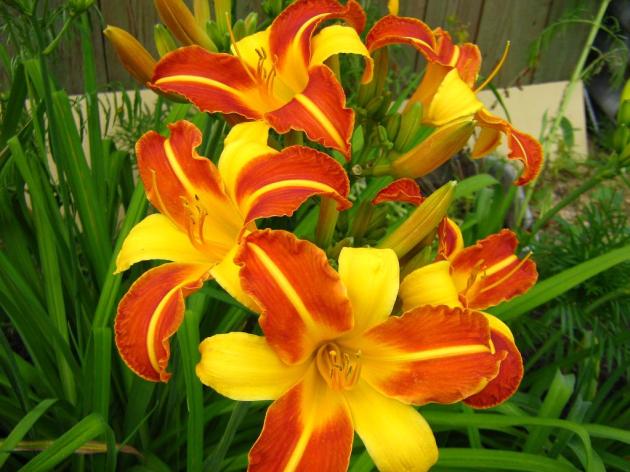
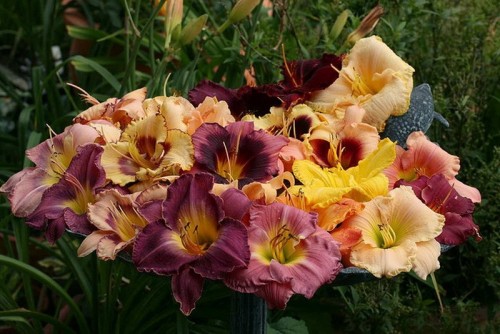
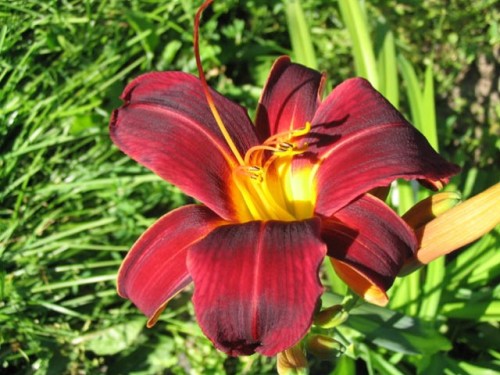

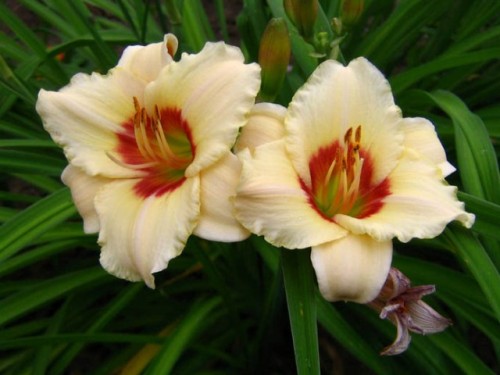
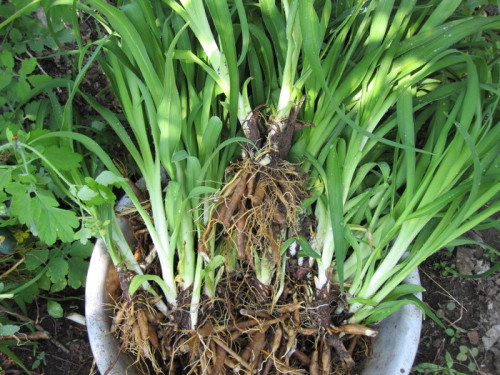
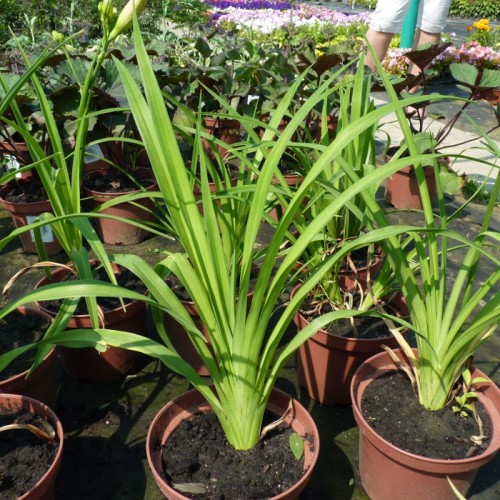
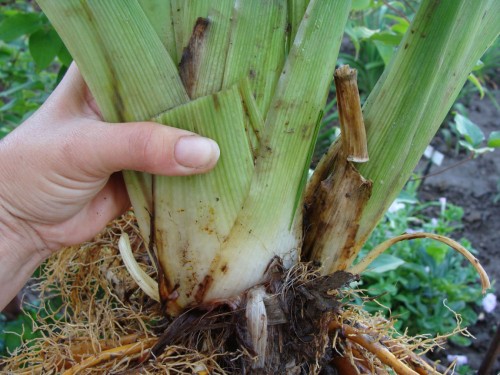
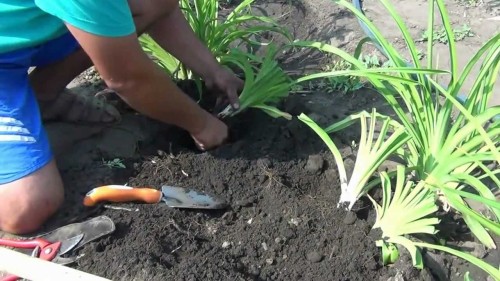
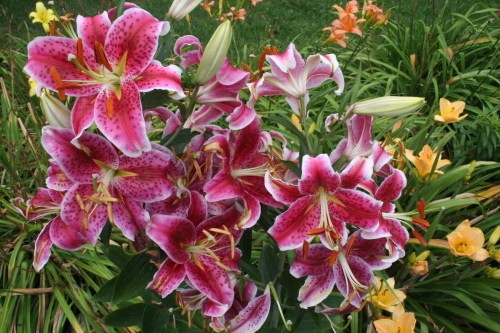
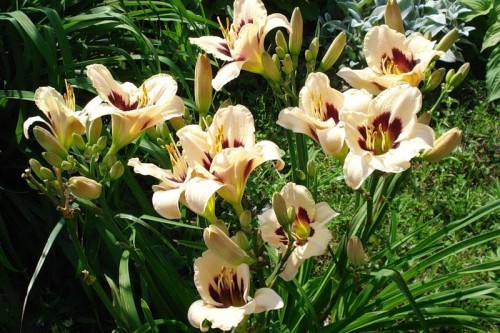
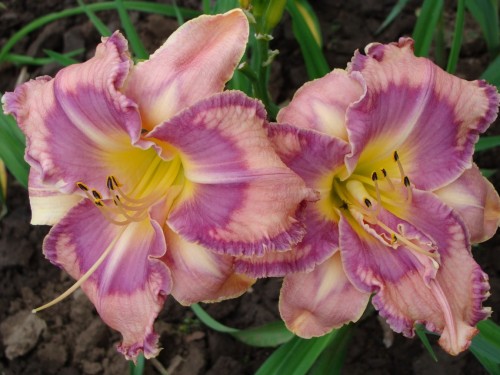
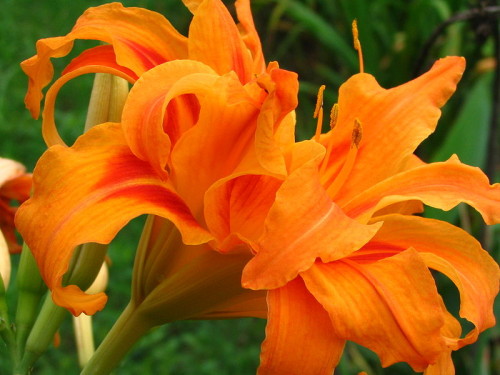
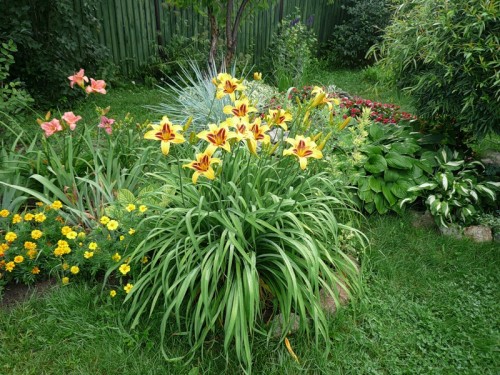
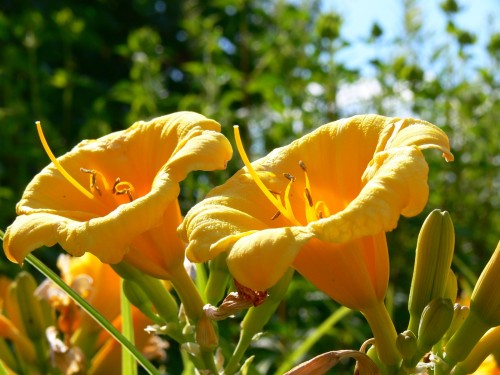
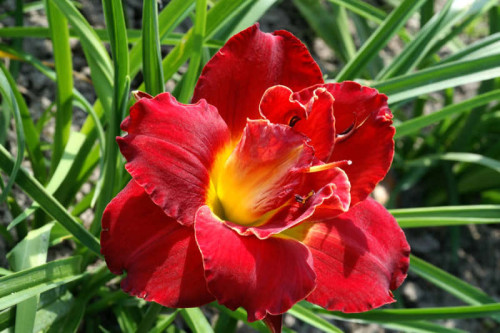
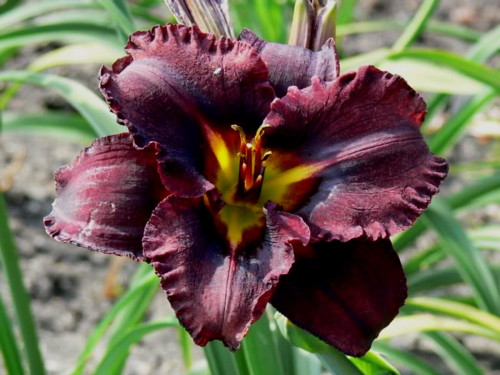
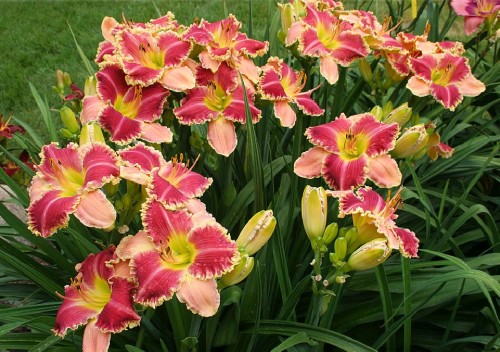













 Start a discussion ...
Start a discussion ...